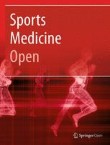2022 Citation Impact
4.6 - 2-year Impact Factor
5.7 - 5-year Impact Factor
1.705 - SNIP (Source Normalized Impact per Paper)
1.15 - SJR (SCImago Journal Rank)
2023 Speed
15 days submission to first editorial decision for all manuscripts (Median)
216 days submission to accept (Median)
2023 Usage
1,609,820 downloads
4,288 Altmetric mentions
